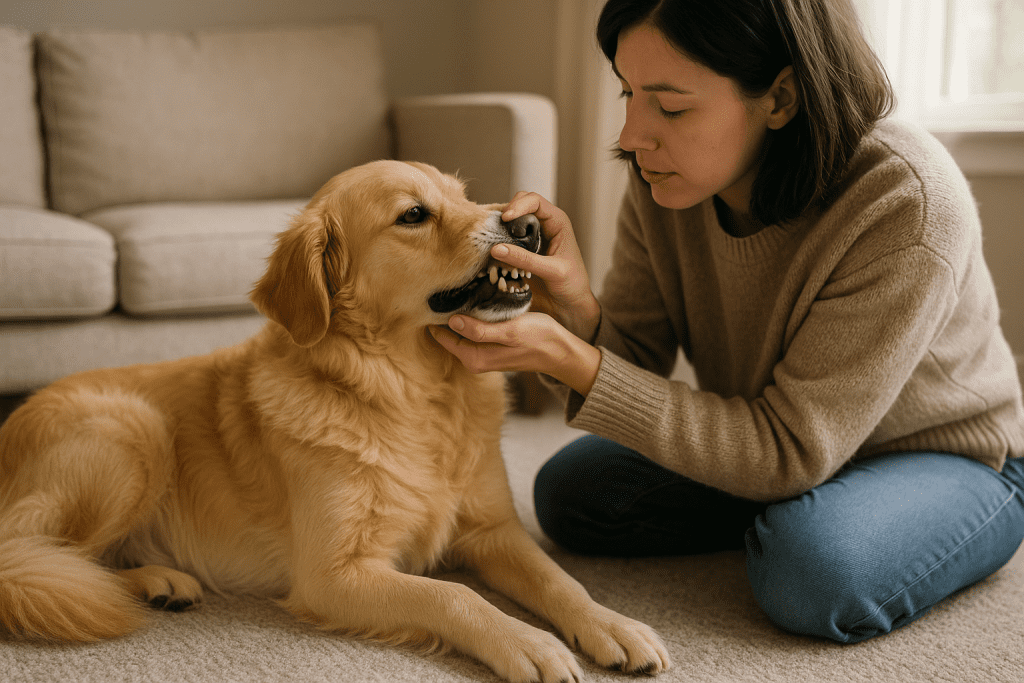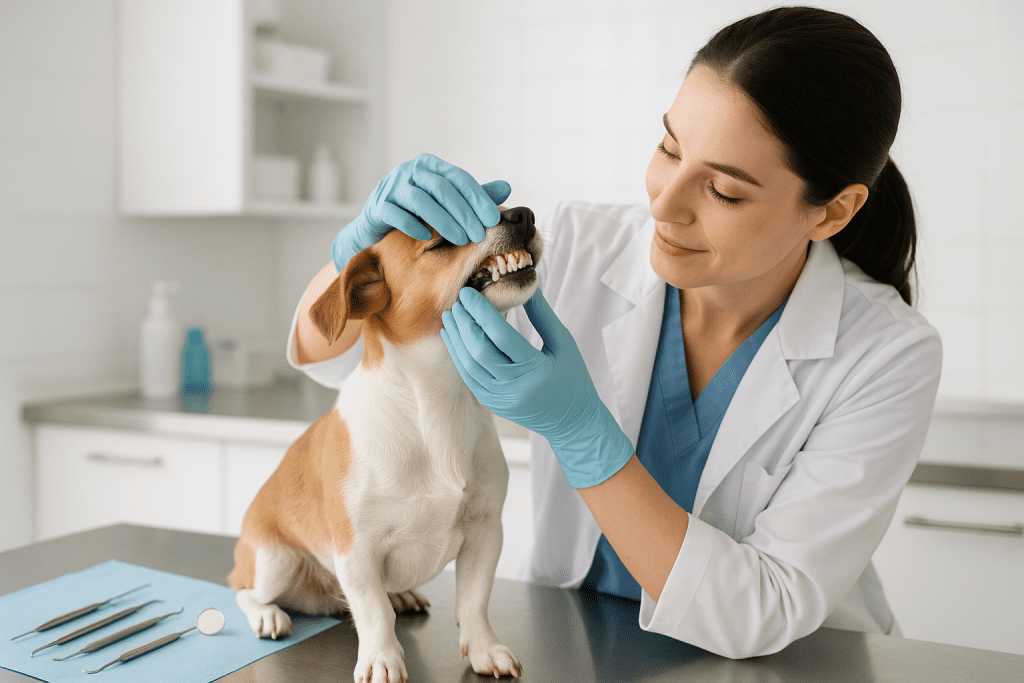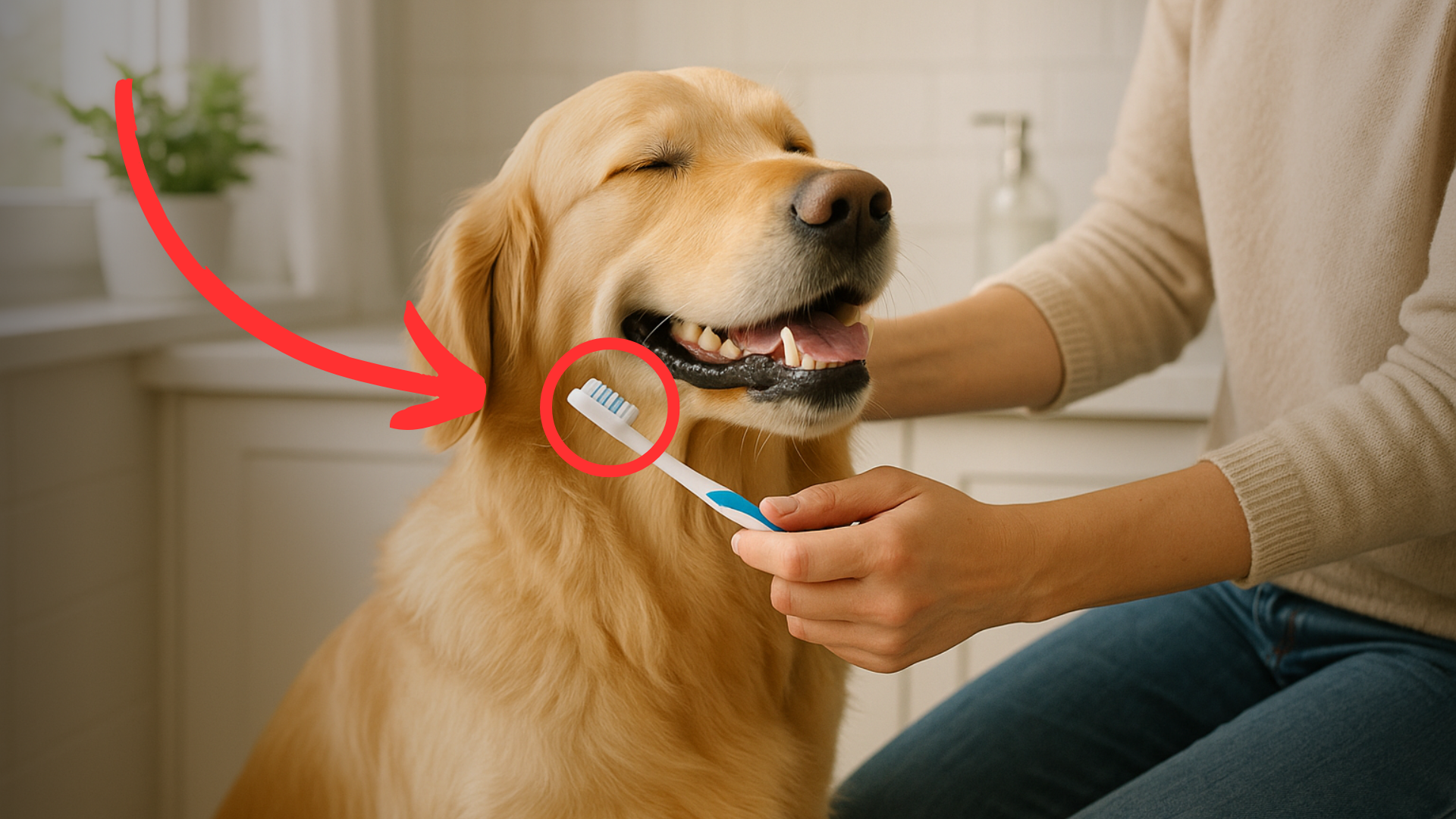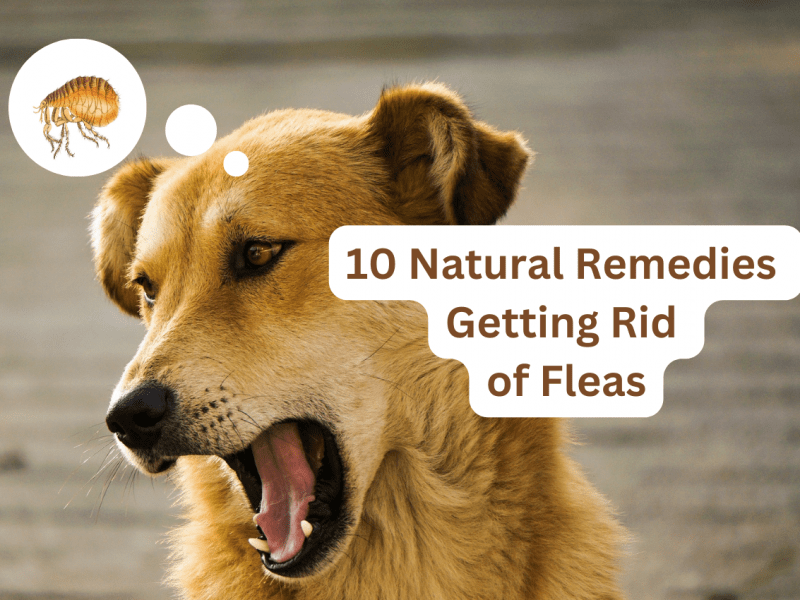Dog owners often struggle with keeping their pet’s teeth clean. In fact, studies show that two-thirds of owners don’t brush their dog’s teeth regularly, and as a result, over 80% of dogs develop dental disease by age two. This leads to bad breath, painful gums, and even tooth loss, and the bacteria from oral disease can spread to cause heart, kidney, or liver problems.
The great news is, you can stop most dental problems just by building a few simple habits at home. In this guide to dog dental care at home, you’ll learn easy daily, weekly, and long-term tips, like brushing your dog’s teeth, giving chews, and doing regular check-ups, to keep their teeth clean and their smile bright.
Daily Routine for Dog Dental Care at Home

Keeping your dog’s teeth clean doesn’t need to be hard. In fact, just a few minutes a day can make a huge difference. Think of it like brushing your own teeth—quick, easy, and essential. It helps stop bad breath, protects against painful gum problems, and keeps your dog feeling their best.
Let’s walk through the simple daily steps to keep that tail wagging and those teeth shining!
1. Brush Your Dog’s Teeth
Brushing is the best way to prevent plaque from building up on your dog’s teeth. Use a toothbrush made for dogs, either a soft-bristled brush or a finger brush, and always use safe toothpaste. Never use human toothpaste, since it often contains xylitol, a sweetener that’s toxic to dogs.
Enzymatic dog toothpaste is a great choice. It has special ingredients that fight bacteria and help break down tartar, and it’s safe if your dog swallows it.
How to Brush Your Dog’s Teeth
To brush, squeeze out a pea-sized amount of toothpaste and gently brush in small circles along your dog’s gumline for 1 to 2 minutes (Greenies). Focus on the back teeth, since that’s where plaque builds up the most.
If your dog is new to brushing, take it slow. Let them taste the toothpaste first. Then brush just a few teeth at a time, and give lots of praise or a small treat to make it a positive experience.
Avoid common mistakes like using human toothpaste, which is dangerous, or giving up too quickly. With patience and practice, most dogs can get used to brushing as a normal part of their routine.
2. Give dental treats or chews daily.
Dental chews are tasty treats designed to scrub your dog’s teeth and reduce tartar while they gnaw. Chewing helps clean teeth to the gumline and can even prevent oral issues over time. Look for products approved by the Veterinary Oral Health Council, for example, Greenies™ dental chews carry the VOHC seal and are proven to fight plaque and tartar.
Aim to give your dog one dental chew per day as directed. Remember, dental treats shouldn’t replace brushing entirely, but they’re a great supplement.
Best Dental Chews For Dogs
Choose chews of the appropriate size for your dog and make sure they’re not too hard. A good rule is the “thumbnail test” (if you can’t make a dent in the chew with your fingernail, it may be too hard and could crack a tooth).
Many dental treats have plaque-fighting ingredients, and the chewing action stimulates gums. For variety, you can also offer tooth-friendly toys like rope toys (which act like floss) or rubber dental toys with ridges that help scrape off plaque.
Natural Dog Dental Care
If you prefer natural options, try giving raw carrots or apple slices as crunchy treats a few times a week, their fibrous texture can help clean teeth and freshen breath as your dog chomps.
Avoid: real bones, antlers, or very hard chew items, despite the old myth, chewing on hard bones can fracture teeth, so stick to safer dental chews and toys.
3. Provide fresh water (with an oral additive if needed).
Keeping your dog hydrated helps rinse the mouth and reduce bacteria. Refill their bowl with clean water daily, and wash the bowl often to prevent bacterial slime. You can also consider adding a dental water additive to their drinking water for extra oral hygiene support.
How to Stop a Dog’s Bad Breath
These additives work like mouthwash for dogs. They’re usually clear and have no smell, so your dog won’t notice them in their water. As your dog drinks, the additive helps freshen their breath and kill harmful bacteria. Some also have special ingredients that help prevent plaque and gum disease. Just follow the instructions on the label to add the right amount to their water each day.
Important: Water additives are a helpful supplement for daily care, but they don’t replace brushing. Think of them as an easy bonus step to improve oral health, especially if your dog’s breath is a bit smelly. Always ensure your dog is still drinking normally when an additive is used.
If they seem hesitant, try using less of the additive or switch to a different brand. And remember, your dog should always have clean, plain water to drink, staying hydrated is very important for their health.
Pro Tip: Make daily dental care a positive experience. Keep brushing sessions short and gentle, and do them at a calm time (like after a walk). Praise your dog and maybe give a dental chew as a reward afterward, so they see teeth-cleaning as a fun, rewarded activity rather than a chore or punishment.
Over time, many dogs come to enjoy the attention during brushing (poultry-flavored toothpaste is a big hit with plenty of pups!).
Weekly Dog Dental Care At Home Tasks

Not everything has to be done daily. Some tasks are best tackled weekly to keep your dog’s mouth in top shape and catch potential issues early. Set aside one day a week to do the following:
1. Inspect Your Dog’s Mouth and Gums
Once a week, take a good look inside your dog’s mouth under good lighting. Gently lift their lips and check the gums and teeth from front to back. Healthy gums should be pink (or pigmented dark, depending on breed) and firm, not red or puffy.
Teeth should be off-white with minimal tartar. Look for warning signs such as red or inflamed gums, bleeding, yellow-brown tartar buildup at the gumline, cracked or broken teeth, pus or oozing around a tooth, or extreme bad breath (a foul odor beyond normal “doggy breath”).
Also check for any foreign objects stuck between teeth or wedged along the gumline, bits of bone, wood, or toy fragments can get trapped and cause infection.
If your dog chews on lots of non-edible items, be extra vigilant for splinters or debris. This weekly check only takes a minute, and it helps you catch problems early. If you notice anything concerning (for example, a loose tooth, a red swelling, or a piece of wood stuck in the gums), schedule a vet appointment promptly.
Don’t wait until the annual exam, early intervention can save your dog pain (and save more teeth). Always be gentle and reassure your dog during mouth checks; if they resist a lot or if you suspect pain, stop and seek veterinary advice.
2. Do a More Thorough Cleaning Session.
As part of your regular dog dental care at home, plan a deeper cleaning at least once a week. This could be a longer brushing session that reaches every corner of your dog’s mouth, or using extra products like dental gels and wipes to improve cleaning and fight plaque.
If you’ve been unable to brush every day, make sure you brush at least a few times per week at minimum. Studies show even brushing 3-4 times weekly can significantly improve dental health compared to not brushing at all.
For dogs that absolutely won’t tolerate a toothbrush, you can use dental wipes or gauze pads coated with dog toothpaste to wipe the tooth surfaces. These wipes are easy to use and great for a quick clean, though they can’t reach all the nooks and crannies between teeth.
Dog Dental Gel:
Another option is a dog dental gel or spray: these are antiseptic gels that you apply to the teeth/gums (or sometimes let your dog lick from an applicator), and they form a protective coating (biofilm) over the teeth to reduce plaque buildup.
For example, there are vet-approved gels that bond to the gumline and help prevent bacteria from sticking to the teeth. Using a gel a couple of times a week, especially after brushing, can give added protection.
Natural remedies can play a role here too, some owners brush using a bit of coconut oil on their finger or a soft cloth. Dogs usually love the taste, and virgin coconut oil has mild antibacterial properties that can combat bad breath.
Just use it sparingly to avoid too many extra calories. After brushing or wiping, consider finishing with a gentle gum massage using your finger or a soft rubber fingertip massager. Massage in small circles along the gumlines, this improves blood circulation and can strengthen the gums over time.
It’s actually relaxing for many dogs! Note: Avoid using any human dental tools (like toothpicks or metal scrapers) on your dog’s teeth, improper use can cut gums or damage tooth enamel. Stick to pet-safe products.
3. Clean Toys, Bowls, and Other Dental Items
A big part of dog dental care at home is keeping things clean that go into your dog’s mouth. Every week, wash their food and water bowls with hot, soapy water. If the bowls are safe for the dishwasher, you can put them in there too. This helps stop germs from getting back into their mouth.
Toys, especially rubber chew toys or rope toys, can accumulate saliva, bacteria, and food particles. Plush toys can grow bacteria too (and they don’t help teeth much once they’re soggy).
Always check the label on your dog’s toys for cleaning instructions. Many hard toys can be wiped down with pet-safe disinfectant or a mix of vinegar and water. Cotton rope toys can sometimes be washed in the washing machine.
A quick tip: you can wet a rope toy and microwave it for one minute to kill germs, but be careful, it will be hot afterward, and it must not contain any metal.
Cleaning your dog’s toys regularly helps prevent bacteria from going right back into their mouth after you’ve brushed their teeth. Also, check chew toys once a week for any damage. If a toy is fraying, has sharp edges, or is starting to splinter, it’s time to throw it away. Keeping your dog’s toys and bowls clean is a simple way to support better dental health.
Long-Term Dental Health Habits

Daily and weekly routines will go a long way, but there are also big-picture habits to sustain your dog’s dental health throughout their life. These involve veterinary care and overall lifestyle choices:
Regular veterinary dental exams are crucial, vets can reach spots and solve problems that home care can’t.
1. Schedule Regular Vet Check-ups.
Even with good dog dental care at home, you can’t clean everything, especially under the gums. That’s why your dog should see a vet at least once a year for a dental check. The vet will look for signs of gum disease, broken teeth, or hidden infections.
As a rule of thumb, small breeds (who often have crowded teeth) should get their first dental cleaning around 1 year of age, and most dogs by age 2.
Thereafter, annual cleanings are common for toy breeds or dogs prone to dental issues, whereas larger breeds with healthier mouths might need a cleaning every 1-2 years, your vet will advise based on your pet’s individual needs.
Professional Cleanings
Professional cleanings involve scaling away tartar (including below the gumline where our brushes can’t reach), polishing the teeth, and sometimes taking X-rays to check roots and jaw health.
These cleanings are done while your dog is under general anesthesia to keep them comfortable and still. Don’t worry, modern anesthesia is very safe. Your vet and their team will watch your dog closely the whole time. The small risk is worth it to protect your dog’s health and prevent serious dental problems
Avoid Non-Anesthetic Dental Cleanings
Some groomers or pet stores offer dental cleanings without anesthesia, but experts, including the American Veterinary Dental College, don’t recommend them. That’s because it’s not possible to clean under the gums without putting your dog under, and the procedure can be uncomfortable or even painful.
It’s best to follow your vet’s advice when it comes to dental care. Regular cleanings at the vet can catch problems like tooth infections or gum disease early and help save your dog’s teeth. It’s also usually cheaper to do routine cleanings than to treat serious dental issues later.
2. Feed a Tooth-Friendly Diet
What your dog eats plays a big role in their dental health. You might have heard that dry kibble is better than soft food because it helps clean the teeth. That’s partly true, kibble can help a little by rubbing off some plaque. But don’t count on kibble alone. Whether your dog eats dry or wet food, plaque will still build up if you’re not brushing their teeth. Good dog dental care at home always includes brushing, no matter what food they eat.
Furthermore, if your dog is on soft food, you may need to be a bit more vigilant with brushing, since sticky food can cling to teeth and speed up plaque. For dogs with frequent tartar build-up, ask your vet about switching to a dental-specific diet.
Some special types of dog kibble are made to help clean your dog’s teeth while they chew. These kibbles are usually bigger and made with a texture that doesn’t break apart too easily, so they gently scrub the teeth. One example is Hill’s Prescription t/d diet, which is recommended by vets to help reduce tartar. Its unique texture works like a toothbrush as your dog chews. These diets also may include nutrients like added polyphosphates or zinc to help hinder plaque mineralization.
Dental Treats and Supplements:
In addition to daily chews, you can use other long-term aids like dental powder supplements that you sprinkle on food (e.g. a seaweed-based powder that has been shown to reduce plaque over time).
Some vets also recommend probiotics made for oral health. These help keep the right balance of bacteria in your dog’s mouth. When giving treats, try to avoid sugary or starchy human foods, since they can cause plaque to build up faster. Instead, offer raw vegetables or dental treats approved by the Veterinary Oral Health Council (VOHC) as healthier options.
Avoid Giving Hard Bones:
Many people think chewing on bones helps clean a dog’s teeth, but that’s actually a myth. In fact, hard bones or antlers can break your dog’s teeth. It’s better to choose safer chews that are firm enough to clean the teeth but soft enough not to cause damage.
3. Stay Consistent and Start Early
Good dental habits over time are the key to keeping your dog’s teeth healthy. It’s much easier to teach a puppy to accept brushing than an older dog, so it’s best to start early if you can. Puppies usually get used to having their mouths touched pretty quickly, especially if you make it a fun and rewarding experience.
However, if you have an adult dog and you haven’t been doing regular dental care, don’t worry, it’s never too late to begin a routine. You may need extra patience with older dogs: introduce the toothbrush and toothpaste gradually (as described above) and go at your dog’s pace.
Being consistent is important. Even long-time dog owners sometimes forget, but having a set routine helps. For example, you could brush your dog’s teeth every evening after dinner and do a mouth check every Sunday.
Making it a habit ensures that tartar doesn’t have a chance to gain a foothold. It can help to set reminders on your phone or put the dog’s toothbrush next to your own as a visual cue. Over the years, continue to adjust your dog’s dental care as needed.
Senior dogs might need more frequent vet check-ups or softer chews if their teeth become worn. Very old dogs or those with dental pain may eat better with wet food. If so, be sure to clean those teeth diligently since soft food can increase plaque.
Also, replace your dog’s toothbrush every 3-4 months (or sooner if bristles are frayed) just like you would for your own, and check expiration dates on dental products (some enzymatic toothpastes lose effectiveness over time).
Lastly, involve the whole family in your pup’s dental care so that everyone handles the dog’s mouth confidently. This way, if you’re unavailable, your dog’s routine doesn’t stop.
Over the long term, a well-maintained oral care routine will save your dog from pain and save you from hefty dental bills, creating a win-win for both of you.
Conclusion
Keeping your dog’s teeth clean at home might seem daunting at first, but by following these daily, weekly, and yearly practices, it becomes an easy routine. A little effort each day, brushing with a yummy dog toothpaste or handing out a dental chew, can prevent the majority of serious dental issues.
Weekly mouth check-ups and the occasional extra cleaning ensure you catch any problems early, and regular vet cleanings polish off anything you might have missed. The payoff for this diligence is a pup with fresher breath, a healthier heart and organs (since you’re reducing oral bacteria entering the bloodstream), and a happier, pain-free life as they age.
Start building your dog dental care routine at home now and see the improvement in your dog’s smile and demeanor.
Don’t forget to share your own at-home dental care experiences in the comments. What tricks or products worked best for your furry friend?
Recommended Reading
Reference:
- American Kennel Club Canine Health Foundation
- American Veterinary Medical Association
- AKC Expert Advice
- Greenies® Brand Blog
- BetterPet Vet-Reviewed Guide
- VCA Animal Hospitals



